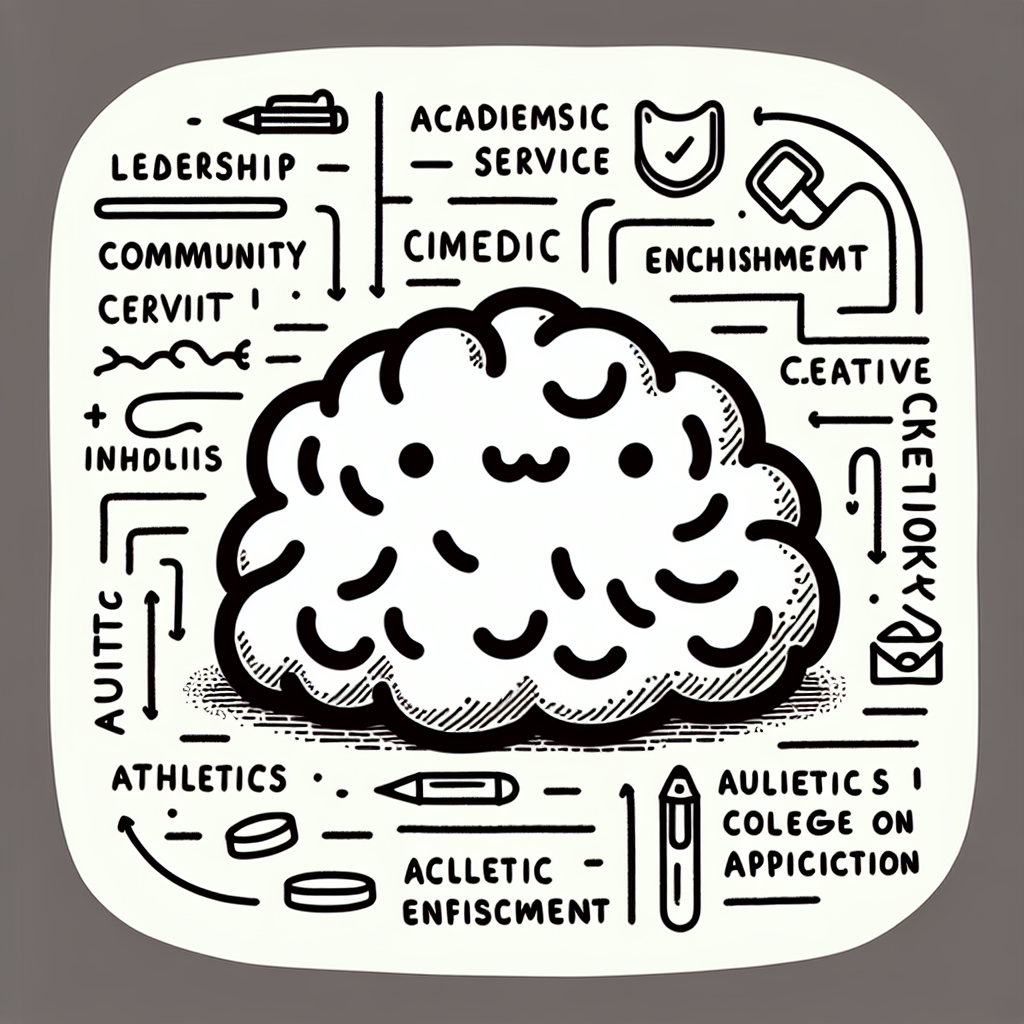Introduction
In today's competitive landscape, academics alone are not enough to stand out in the college admissions process. Admissions officers use a holistic review approach, which means they evaluate students based on a range of factors beyond grades and test scores. One of the most important components of this review is extracurricular involvement.
Extracurricular activities give colleges insight into a student’s passions, leadership potential, commitment, and personal values. They help admissions teams understand how applicants might contribute to campus life and how they pursue interests outside the classroom. From athletics to volunteer work, and from academic clubs to creative pursuits, the best extracurriculars for college admissions are those that reflect genuine interest and sustained engagement.
This guide is designed to help students identify and present meaningful extracurricular activities that align with their goals and strengths. It outlines what admissions officers are looking for and offers strategies for choosing and framing experiences that can make a lasting impression in a college application.

Why Extracurriculars Matter in College Admissions
Extracurricular activities play a crucial role in college admissions because they provide evidence of transferable skills that can't be fully captured by grades and test scores. Admissions officers look for students who bring more than academic performance—they want individuals who can contribute to campus life and thrive in a variety of settings.
Demonstration of Transferable Skills
Extracurriculars allow students to showcase leadership by taking initiative, managing teams, and organizing events. Whether it's captaining a sports team or leading a student organization, these experiences demonstrate the ability to motivate others and handle responsibility.
Teamwork is another key skill developed through group activities such as clubs, sports, and collaborative projects. Working effectively with peers shows maturity and the ability to navigate social dynamics—traits valued in a collegiate environment.
Time management is essential when balancing academics with extracurricular commitments. Students who successfully juggle multiple responsibilities show they can handle the demands of college life.
Long-term involvement in activities reflects drive and commitment. Sustained participation over time indicates passion and resilience, characteristics that suggest the student will engage deeply in college pursuits.
📌 Harvard University’s Mignone Center for Career Success emphasizes that these skills are highly valued by admissions officers.
Enhancing Academic Profiles
Extracurriculars also enhance academic profiles by complementing GPA and standardized test scores. They allow students to apply what they learn in the classroom to real-world contexts, adding depth to their academic record.
Participation in academic clubs, competitions, or research projects demonstrates intellectual curiosity and a willingness to explore subjects beyond the curriculum. These activities signal to admissions officers that a student is engaged and motivated to learn.
📌 University of South Florida Admissions Blog highlights the importance of extracurriculars as a complement to strong academics.

Categories of Impactful Extracurricular Activities
When evaluating the best extracurriculars for college admissions, it’s important to understand the categories of involvement that colleges value most. Here are several types of activities that can make a strong impression:
1. Leadership Roles
Taking on leadership roles shows initiative, responsibility, and the ability to influence others. Examples include:
- Serving in student government
- Being a club president or founding a new organization
- Organizing school-wide events or initiatives
2. Community Service & Civic Engagement
Colleges appreciate students who commit to helping others and engage with societal issues. This can include:
- Volunteering with local nonprofits or community centers
- Leading fundraising efforts for meaningful causes
- Participating in activism or advocacy campaigns
As noted by the St. John's University Blog, leadership and service demonstrate both initiative and a sustained commitment to making a difference.
3. Academic Enrichment
Academic activities beyond the classroom can highlight intellectual curiosity and dedication to learning. These activities include:
- Competing in science fairs, math olympiads, or debate tournaments
- Conducting independent research projects
- Tutoring younger students or mentoring peers
4. Creative Pursuits
Creative expression allows students to showcase originality and passion. Notable examples are:
- Performing in music, drama, or visual arts
- Writing for school newspapers or entering writing competitions
- Creating digital content like films, podcasts, or blogs
5. Athletic Participation
Involvement in sports demonstrates physical discipline, perseverance, and the ability to work as part of a team. This category includes:
- Playing on varsity or club sports teams
6. Work Experience & Internships
Real-world experience shows maturity and a strong work ethic. Valuable experiences include:
- Holding part-time jobs during the school year or summer
- Interning in a field of interest
- Starting or managing a small business
7. Cultural & Identity-Based Involvement
Engaging with one's cultural or personal identity can reflect a student's values and leadership within their community. Examples include:
- Participating in cultural or religious organizations
- Advocating for diversity, equity, and inclusion
Each of these categories contributes to a well-rounded profile and can support a student’s case when applying with the best extracurriculars for college admissions.

Quality Over Quantity: What Makes an Activity Stand Out
When considering the best extracurriculars for college admissions, admissions officers prioritize the depth of involvement over the number of activities listed. A long-term commitment to an activity signals dedication and reliability. For instance, staying with a club or organization for several years, especially when it leads to advancement—such as moving from a general member to a leadership role like treasurer or president—demonstrates initiative and growth.
Personal growth and impact also play a crucial role in distinguishing standout activities. Colleges look for evidence of meaningful learning experiences. This could include developing leadership skills, overcoming challenges, or learning to collaborate with diverse groups. Equally important is the impact made on others—whether that’s organizing a community event, mentoring younger students, or launching a successful initiative. These contributions reflect both character and influence.
Finally, how students present their activities in applications matters. Strong storytelling in essays and interviews can connect extracurriculars to academic or career aspirations. For example, a student involved in robotics may describe how the experience sparked an interest in engineering, reinforcing their intended major. By framing activities in a way that highlights personal development and future goals, applicants can turn even common extracurriculars into compelling components of their college application.

Equity and Access: Understanding the Bigger Picture
When evaluating the best extracurriculars for college admissions, it's crucial to consider the broader context of equity and access. Participation in extracurriculars is often shaped by socioeconomic factors, which can limit or expand a student's opportunities.
Socioeconomic Disparities in Access
Access to extracurriculars frequently reflects a student's income level and available resources. Students from more affluent backgrounds often have greater access to structured activities, private lessons, and enrichment programs that can strengthen their college applications. In contrast, students from lower-income families may face obstacles such as transportation issues, financial constraints, or the need to work part-time jobs.
The University of Maryland College of Education notes that extracurriculars can mirror existing social and economic inequalities, making it essential for admissions processes to take context into account. Similarly, the Brookings Institution emphasizes that extracurricular involvement is not a level playing field and recommends training admissions officers to better recognize and account for these disparities.
Leveling the Playing Field
To create a fairer evaluation process, colleges are increasingly recognizing non-traditional forms of extracurricular engagement. Responsibilities such as caring for siblings, working to support a family, or contributing to a household can demonstrate maturity, time management, and dedication—traits just as valuable as those gained through formal clubs or sports.
Students can also stand out by making the most of the resources they do have. Initiating community projects, self-directed learning, or demonstrating leadership in local or informal settings all show creativity and resourcefulness. These experiences should be highlighted in applications to reflect the student’s ability to overcome challenges and make meaningful contributions, aligning with what truly defines the best extracurriculars for college admissions.

Recommendations for Students
Choosing the Right Activities
When selecting the best extracurriculars for college admissions, students should begin with their genuine interests and passions. Admissions officers value authenticity, so pursuing activities that reflect true enthusiasm often leads to deeper involvement and stronger applications. Whether it's music, science clubs, athletics, or volunteer work, choose areas where you can grow, take on responsibility, and potentially lead. Leadership roles and sustained commitment signal dedication and initiative—qualities colleges seek.
Building a Coherent Narrative
The best extracurriculars for college admissions are those that help tell a consistent and compelling personal story. Students should align their activities with their academic interests and long-term goals. For example, a student interested in environmental science might engage in sustainability clubs, internships with local conservation groups, and science fairs. These experiences can highlight identity, resilience, and the impact the student has made in their community, helping admissions officers see a clear and intentional path.
Staying Consistent and Reflective
Consistency over time is key to making extracurriculars stand out. Keep a journal or digital log of your involvement, noting roles, accomplishments, and lessons learned. Regular reflection helps students articulate their growth and contributions, which is especially useful when writing college essays or preparing for interviews. Being mindful of your journey helps ensure that your extracurricular profile supports your broader application narrative, making it easier for colleges to understand who you are and what you value.

Conclusion
When considering the best extracurriculars for college admissions, it's important to remember that these activities are more than just resume builders—they are reflections of your passions, values, and personal growth. Admissions committees look beyond titles and hours; they seek to understand who you are through the choices you've made and the commitment you've shown.
Focus on impact, growth, and authenticity in your extracurricular involvement. Whether you're leading a club, volunteering in your community, or pursuing an independent project, what matters most is how these experiences have shaped you and how they demonstrate your initiative and character.
Ultimately, your extracurriculars should help you tell a compelling, individualized story. Use them to highlight your journey, showcase your strengths, and illustrate the unique perspective you'll bring to a college campus.

Citations
- Harvard University’s Mignone Center for Career Success explains how structured involvement in student organizations, athletics, and volunteer work can reflect leadership and initiative—qualities that top colleges value when evaluating the best extracurriculars for college admissions.
- The University of Maryland College of Education discusses the need to reconsider how extracurriculars are perceived in admissions, suggesting that the best extracurriculars for college admissions should include activities that demonstrate resilience and creativity, not just prestige or access.
- According to the University of South Florida Admissions Blog, consistent participation in meaningful extracurriculars gives students an edge in the admissions process. They emphasize that colleges look for depth over breadth when identifying the best extracurriculars for college admissions.
- The St. John's University Blog highlights that impactful extracurriculars—those that show personal growth and community contribution—are among the best extracurriculars for college admissions.
- The Brookings Institution addresses equity gaps in access to extracurricular activities, noting that while the best extracurriculars for college admissions can boost applications, systemic barriers must be considered when evaluating students’ opportunities.














